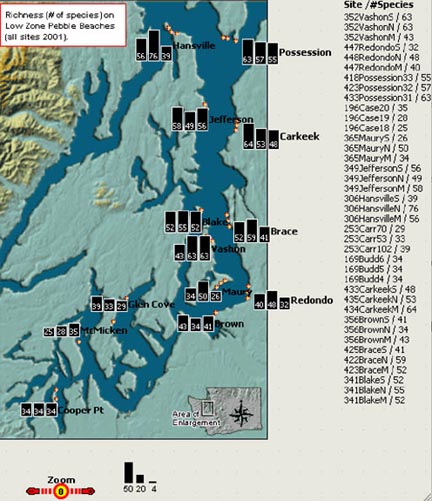|
Hypotheses Conclusions
|
|
The Diversity PatternIntertidal benthic (bottom-dwelling) communities in Puget Sound show a striking trend, consistent from year to year, in the number of species found at the mean low water mark; diversity is low in the south and high in the north. This is true in both epibiota (plants and animals living on the surface) and infauna (animals living in the sediment) of pebble-sand beaches; very similar physical habitats are almost twice as species-rich in the north as in the south. More details on this pattern can be found at www2.wadnr.gov/nearshore/scale/index.asp. The existence of this diversity gradient in one habitat type in Puget Sound provides us with a unique opportunity to test ideas about the maintenance of diversity in estuaries: what processes are important? Are there detectable general rules that could apply to other estuarine situations?
|



